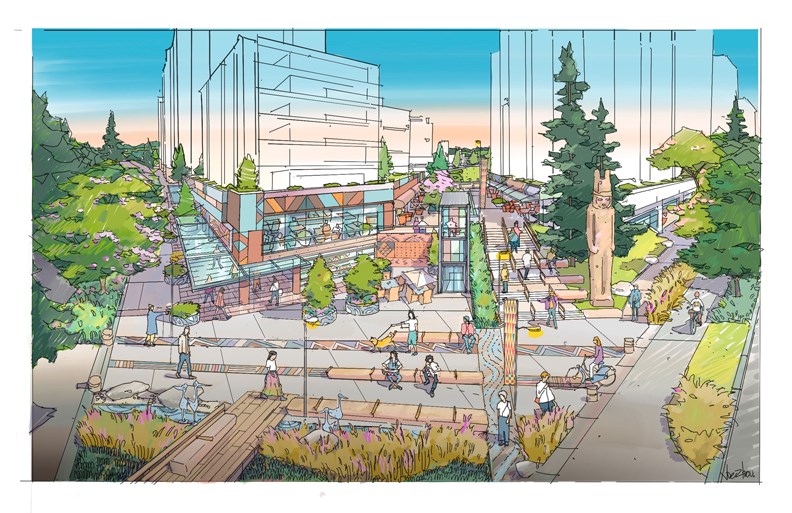A portion of Burnaby with a troubled past is poised for a refresh centred around urban rejuvenation and reconciliation with local First Nations.
Council was briefed Monday on the status of redeveloping the Willingdon lands located at 3405 Willingdon Ave., which is owned by the Musqueam Indian Band, Tsleil-Waututh Nation, and Aquilini Development. The 40-acre parcel is envisioned as a “contemporary Musqueam and Tsleil-Waututh urban village,” should the necessary land use changes be approved by council next year.
Monday’s presentation from staff and members of the Musqueam Indian Band brought council up to speed on the planning process and vision for urban renewal.
Council unanimously approved the staff presentation to move forward to public consultation and future land-use changes next year.
“It’s nice to see what has been a dark corner of the city – a former mental health facility (and) a former youth detention centre – is actually going to blossom into economic development and housing and some growth and reconciliation between the community and the Native people,” said Coun. Dan Johnston.
Located between Brentwood Town Centre and Metrotown, the site will accommodate more than 5,200 residential units, including 20 per cent rental and 300-plus non-market units. Almost four million square feet of residential land is planned.
A further of breakdown of the proposed residential land use includes: 3.3 million square feet of leasehold strata; 385,000 square feet of market rental; 70,000 square feet of moderate rental and 151,000 square feet of affordable rentals.
The area is tapped in planning documents to become a rapid transit hub in the future.
What will the development look like?
To accommodate the incoming growth, city planners are calling for 17 mixed-use buildings in the range of 14 to 20 storeys, four “landmark buildings” between 22 and 25 storeys, and a series of other low-to-midrise, mixed-use buildings.
A 450,000-square-foot film studio will serve as the commercial anchor of the redevelopment and is estimated to create more than 3,000 jobs.
“This project is an exciting, amazing and modern example of how you can go beyond land acknowledgements and return the land to their rightful owners,” said Coun. Alison Gu.
The plan is based around four guiding principles: respect the past, embrace future; connect with land and water; nurture a sense of place; and advance reconciliation and accommodation.
Four districts planned: parks, trade, storytelling, residential
Four districts will highlight the redevelopment.
Located at the centre of the site, the park district will feature large, open spaces, child care, cafés, an outdoor hearth, cultural centre and potentially some housing for seniors.
The trade district will serve as the commercial hub for the entire neighbourhood and will include restaurants, grocery stores, cafés and the potential for other large-scale commercial developments. Staff also suggested certain streets in the area could be temporarily closed to allow for street festivals and other events.
The storytelling district will be focused around the 450,000-square-foot studio and serve as the major area for jobs generation.
The northwest corner of the site will be a quieter area focused exclusively on residential.
“Each of these districts contribute to a rich public realm which consists of four elements: gathering spaces, portals, natural places and character streets,” said city planner Karin Hung.
City staff will now gather community feedback beginning next year, along with bringing proposed land use changes forward to council that are necessary to get shovels in the ground.
“This is a real change in process for our people. It’s very important for our members as owners of this property, this land, the history and what we stand for to be established there,” said Musqueam Indian Band member Johnna Sparrow, who serves as an aboriginal relations advisor with Aquilini Development. “In the time of reconciliation, this truly is something we can reconcile and work forward to build a brighter future.”



